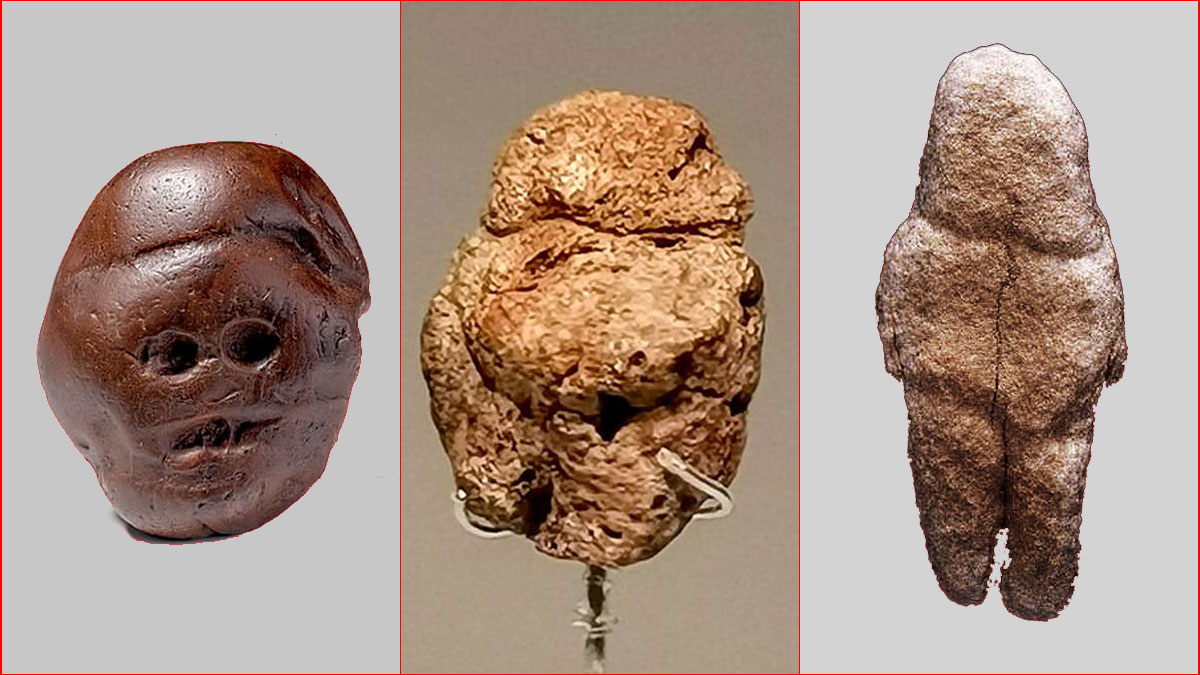Homo Sapiens or Modern Humans first appeared around 300,000 years ago. They are the most advanced species of the genus Homo, which includes a number of extinct species like Homo Erectus and Neanderthals. 4 of the 5 artworks on our list were created by Homo Erectus and Neanderthals. The first one is a manuport of Australopithecus Africanus, a species that is ancestral to Homo. So, here are 5 prehistoric artworks not created by Modern Humans.
Table of Contents
The Key Questions
Prehistory is the period of human history before the invention of writing. This makes it problematic to define prehistoric art as writing developed in different regions at different times. Moreover, oral traditions do not suggest in any way that a culture is not developed. In keeping with convention, prehistoric art may be defined as art made in the distant past, roughly corresponding with the stone age which lasted from 3.3 million years ago to around 2,000 BCE.
Archaeologists believe that manuports were chosen because of their aesthetic appearance. Thus, although they are not modified with tools, they show the ability to perceive and appreciate the object. Due to this, several rock scientists consider manuports as art. Those familiar with modern art must be knowing about that readymades of Marcel Duchamp, which are also considered art.
There is no agreed definition of what art is and transferring Eurocentric concepts of Fine Arts to rock art is problematic as these concepts are not scientific but philosophical and superficial. There are numerous rock markings and only two have been made by humans. All others are natural. Of the two, only one is regarded as rock art; which is intentional and not utilitarian. Cupules come under this category and hence it is considered as rock art by rock scientists.
#1 Makapansgat Pebble
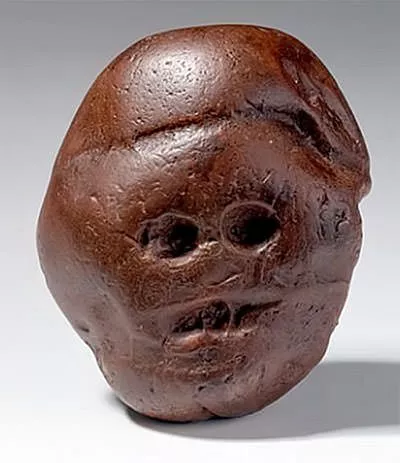
| Estimated Age: | 2 to 3 million years |
| Found At: | Makapan Valley, South Africa |
| Discovered In: | 1925 |
| Discovered By: | Wilfred Eitzman |
A manuport is an object which is not modified in any way but chosen by the observer for its aesthetic appearance. It is identified as it is found on a location which is clearly foreign to the material it is composed of. Manuports are considered art by many experts as they show the ability to perceive and appreciate the object. This makes Makapansgat Pebble, a manuport, the oldest known artwork in the world.
An interesting feature of the pebble is that it may be held in different ways and you can see different faces on it. That is why it is also known as the ‘Pebble of Many Faces’. The pebble was most likely carried to its find-spot by an Australopithecus Africanus, an ape-like species with some early human characteristics.
#2 Venus of Tan-Tan
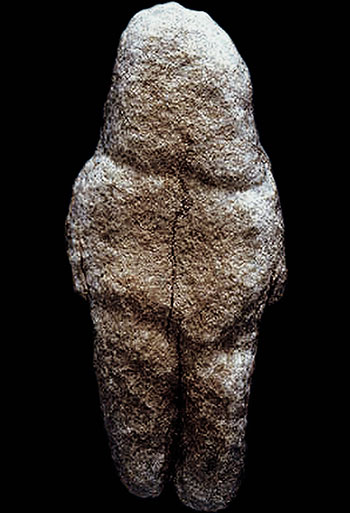
| Estimated Age: | 500,000 to 300,000 years |
| Found At: | Tan-Tan Province, Morocco |
| Discovered In: | 1999 |
| Discovered By: | Lutz Fiedler |
Venus of Tan-Tan is one of only two such objects of similar age which resemble a human figure. Though its shape is mostly a result of natural processes, some parts of it have been artificially modified. It is thought it was first collected by Homo Erectus due to its appearance and then some part of it was modified artificially.
The Tan-Tan Venus is a small object with the following dimensions: length – 58.2 mm; max width – 26.4 mm; thickness – 12 mm; and weighs around 10 grams. It belongs to the Lower Paleolithic era and its age is estimated to be between 500,000 to 300,000 years making it the oldest known human sculpture.
#3 Venus of Berekhat Ram
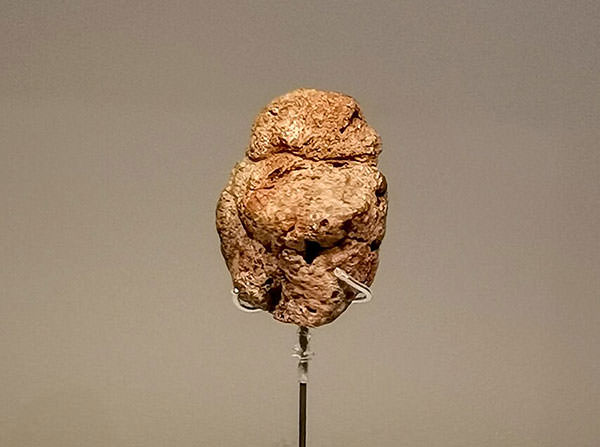
| Estimated Age: | 700,000 to 230,000 years |
| Found At: | Berekhat Ram, Golan Heights, Israel |
| Discovered In: | 1982 |
| Discovered By: | Naama Goren-Inbar |
Venus of Berekhat Ram is the other object of such great antiquity which resembles a human figure It was also most probably modified by Homo Erectus. It is also a pebble which is rounded and partially weathered. Its dimensions are: length – 35mm; width – 25mm; thickness – 21mm; and weight 10.33 gm.
The pebble was studied by three independent groups of scholars and all of them confirmed that some grooves on the object were made artificially. The purposely modified parts include two elongated ‘u’ shaped grooves that could have been made to indicate the arms of a human body and abrasion was possibly used to modify some areas, perhaps to suggest breasts.
#4 Bhimbetka Petroglyphs
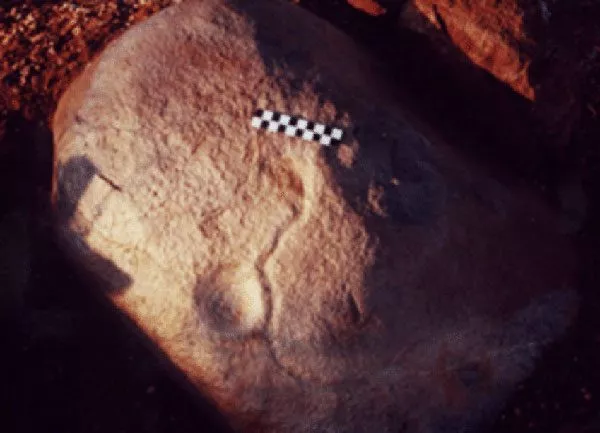
| Estimated Age: | At least 150,000 years |
| Found At: | Bhimbetka Rock Shelters, Madhya Pradesh, India |
| Discovered In: | 1990 |
| Discovered By: | Robert G. Bednarik |
A petroglyph is a type of rock art which has been produced by removing part of the rock surface. This is a reductive process unlike pictograms which are produced by adding a substance on the rock surface. Bhimbetka Petroglyphs are the oldest known rock art in the world. They refer to two petroglyphs, a cupule and a circuitous, hammered line.
Probably created by Homo Erectus, the petroglyphs were discovered during an excavation and were covered by Acheulian (Lower Palaeolithic culture dated to about 1,500,000–150,000 years ago) deposit. This made their age at least Acheulian. These petroglyphs are not to be confused with a plethora of rock paintings from the Mesolithic Era at Bhimbetka.
#5 Gorham’s Cave Engraving
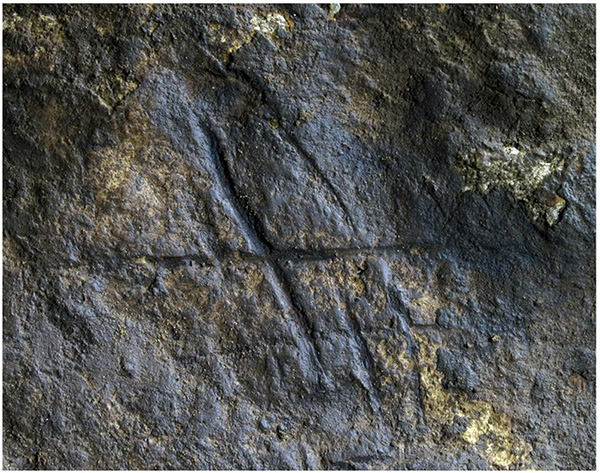
| Estimated Age: | At least 39,000 years |
| Found At: | Gorham’s Cave, Gibraltar |
| Discovered In: | 2012 |
| Discovered By: | Francisco Giles Pacheco |
Gibraltar is a British Overseas Territory located on the Bay of Gibraltar in Europe. Gorham’s Cave, discovered by Captain A. Gorham, is one of the four caves in the Gorham’s Cave complex. The Gorham’s Cave Engraving is a criss-cross pattern. It caused a sensation when it was discovered as in all probability it was created by a Neanderthal. This makes the engraving evidence of Neanderthal capacity for “complex symbolic thought” and “abstract expression”.
The Gorham’s Cave Complex contains extensive archaeological deposits that provide clear evidence of Neanderthal occupation over a span of 100,000 years. The engraving was once covered by a layer of sediment that contained tools in a style long known as the signature of Neanderthals. These tools have been dated to 39,000 years BP. Homo Sapiens had not reached the region by that time.

